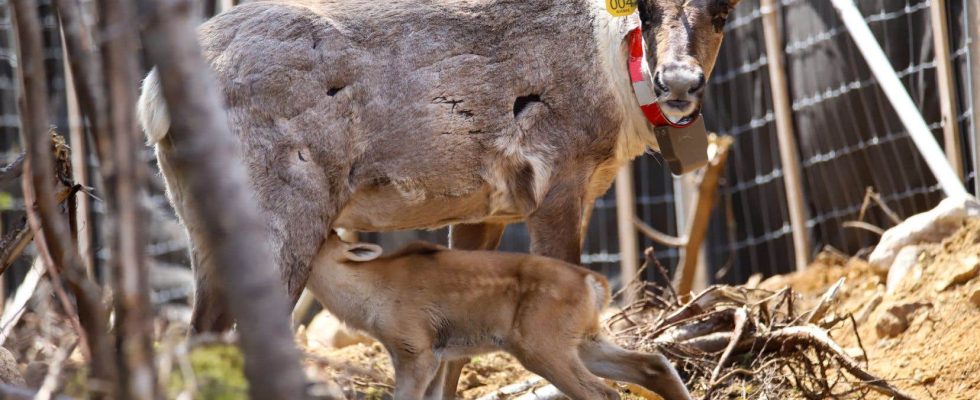Quebec has been so slow to act to protect the declining populations of woodland caribou that some of them are today condemned, at best, to “decades” of captivity, and this is only if the government finally puts in place ambitious measures to restore their forest habitats.
A recognized expert on forest caribou, Martin-Hugues St-Laurent fears more than ever the worst for the province’s three isolated populations: that of Val-d’Or, that of Charlevoix and that of Gaspésie. “We have three populations on artificial respirators,” he says.
The first two have already been placed in permanent captivity and half of the third was captured last winter and put in a temporary enclosure, in an attempt to protect possible births of fawns this spring.
And whatever the Legault government says, the measures announced Tuesday and subject to three-month “consultations” will not change the situation. “We are in the wake of the status quo, and not in something very innovative,” summarizes Mr. St-Laurent. We are talking about modulating forestry interventions, or even restoring habitats. It’s good to restore habitat, but we may see results in only 30 to 50 years. In the meantime, we have 25 caribou in Gaspésie and around thirty in Charlevoix. »
You should know that caribou absolutely need old forests preserved from human activity in order to ensure their survival and food. Since the habitats that the government promised to restore to allow the sustainability of the populations of Charlevoix and Gaspésie are more than 90% disturbed, it will take, at best, decades to find suitable forest environments.
In this context, Martin-Hugues St-Laurent’s observation is clear: “The caribou will have to spend a lot of time in enclosures, but also that predators will be controlled and that we consider the addition of caribou from other herds to boost genetics and hope to have self-sufficient populations. We are on the road to several decades of animals in permanent enclosures or maternity enclosures. »
Such a situation risks quickly raising the question of the size of the enclosures. In the case of Charlevoix, the herd of 16 animals captured in 2022 now includes 31 caribou, before the birthing season in the coming weeks. However, it is confined to an area of barely 0.2 km2.
Extinction ?
Inaction, however, is not an option, since it would condemn the species to pure and simple extinction in Quebec. Mr. St-Laurent, who is a professor in the Department of Biology, Chemistry and Geography at the University of Quebec at Rimouski, judges however that elected officials have tended to procrastinate for years, despite very clear signals from scientists.
In an inventory report by government experts dated 2014, 10 years ago, for example, we warned against the “decline” of the population of Gaspésie, while urging the government to “continue the efforts” for the establishment of “new avenues” of protection. There were three times as many caribou then as today, although there were barely more than 80.
“The most cynical might say that the government is allowing each of the populations to decline before placing them in enclosures. We waited for Gaspésie before acting, same thing for Charlevoix and Val-d’Or. The government is not very proactive. And the fault does not lie only with the CAQ, but with all the governments that have followed one another, which have chosen to abandon the caribou,” argues Martin-Hugues St-Laurent.
The researcher, who also follows the evolution of the different populations that exist further north, now fears that some will suffer the same fate, in the absence of a provincial protection strategy expected for several years and for which there is currently no no timeline.
“Some would say that we are staggering the extinction of the caribou in Quebec over time with our habitat development methods. We bring them all [les populations] towards a state of precariousness. However, it is urgent to act and protect the habitats that remain,” he says.
The Legault government had the opportunity to add a protected area in Gaspésie with the sector known as “Vallières de Saint-Réal”. Such a project was put aside in 2020. But Quebec ultimately opted for “administrative measures”, due to the legal blockage caused by the presence of mining exploration permits in this territory. The door is therefore not closed for the exploitation of ore in a habitat that is nevertheless conducive to the recovery of the caribou.
In light of the findings of scientists, intervention by the federal government, which is possible under the Species at Risk Act, is desirable, according to Mr. St-Laurent. Tuesday, Minister of the Environment Steven Guilbeault criticized the scope of the measures announced by the CAQ government, judging that “several key elements are absent”, including the commitment to protect the habitat of all populations of forest caribou.
